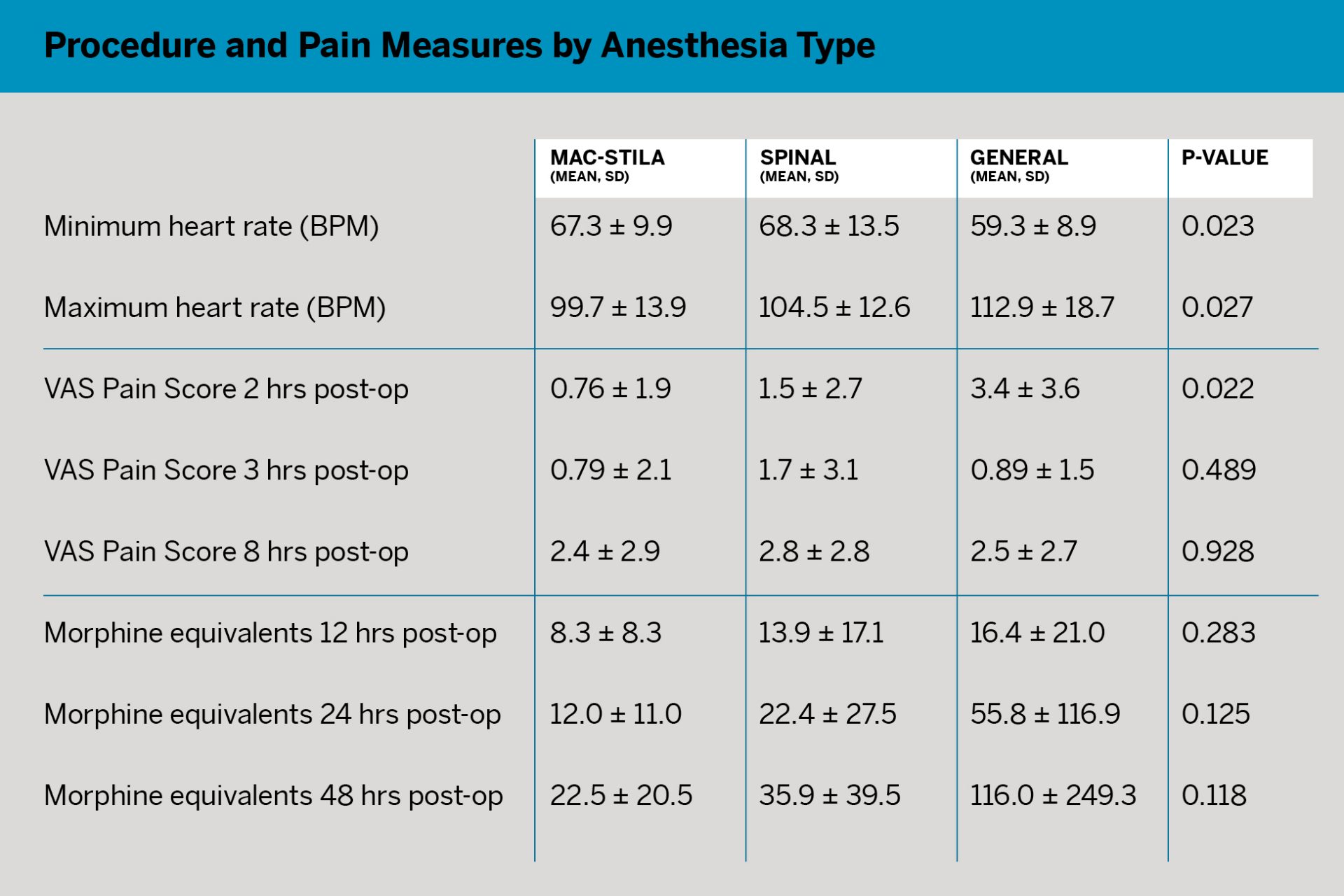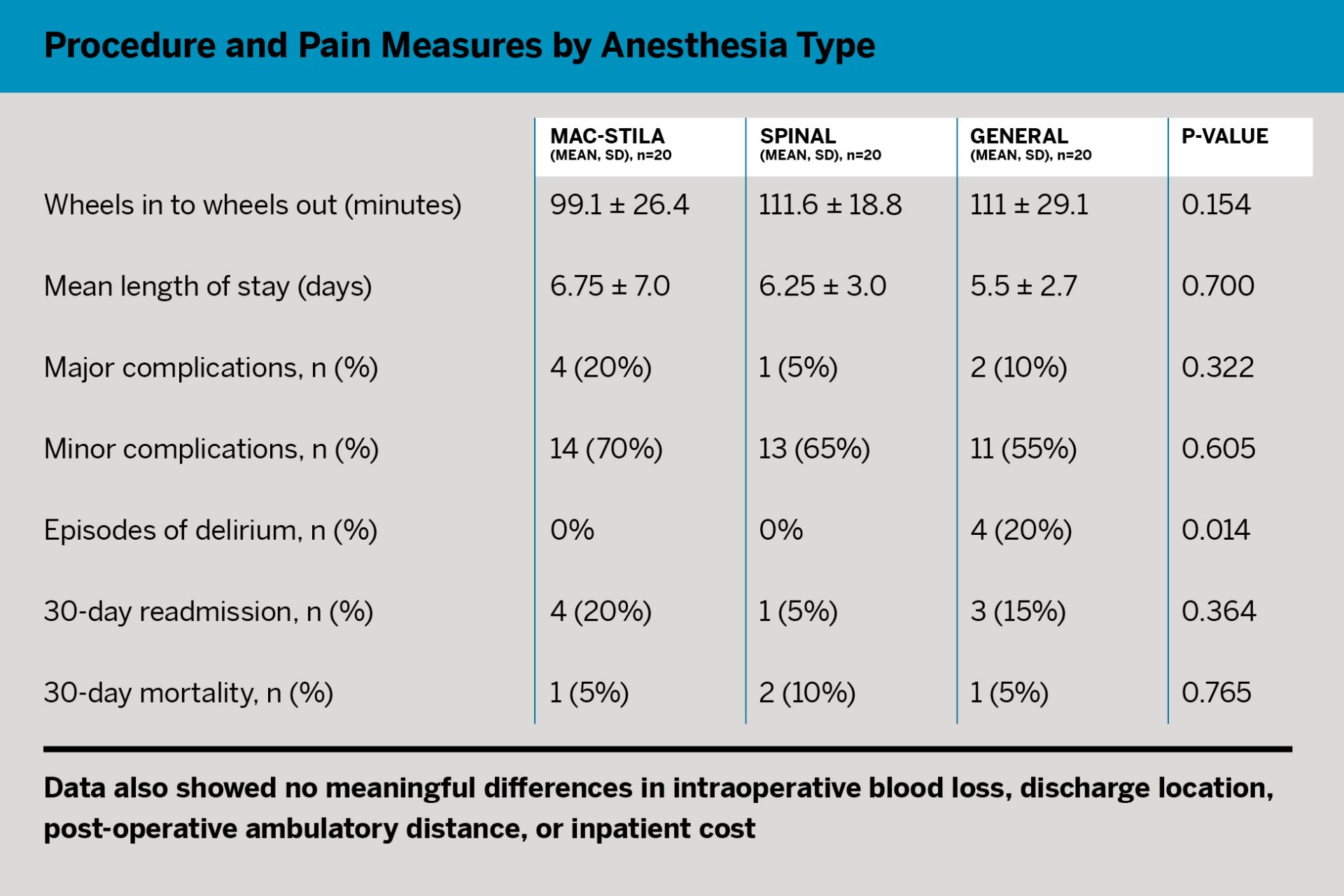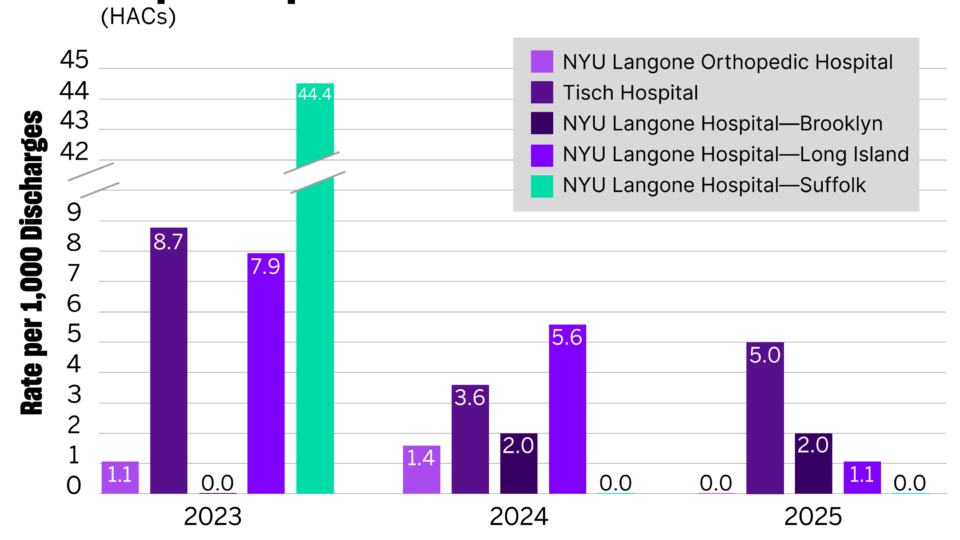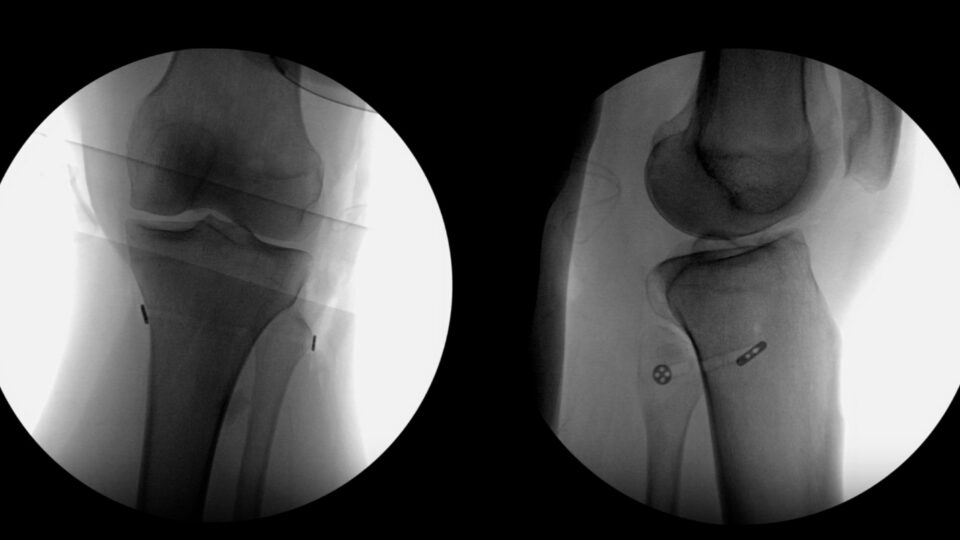Hip fracture fixation is associated with a high risk of perioperative morbidity and mortality. Most surgeons perform the fixation under general or spinal anesthesia; although regional anesthesia with monitored anesthesia care (MAC) has become increasingly popular in recent years, no studies had assessed it in combination with soft-tissue infiltration with local anesthesia (STILA).
Sanjit R. Konda, MD, and colleagues examined the feasibility of using MAC-STILA for patients undergoing hip fracture fixation with short cephalomedullary nails (CMN). For their retrospective study, published in the Journal of Orthopaedic Trauma, they matched 20 consecutive OTA 13.A1-3 IT hip fracture patients treated with a short CMN and MAC-STILA protocol 1:1:1 with other hip fracture patients who had received either general or spinal anesthesia.
“The use of this safe and surgeon-controlled technique will have broad implications towards improving hip fracture care.”
Sanjit R. Konda, MD
The researchers found that MAC-STILA was best at maintaining a normal intraoperative heart rate, yielding lower post-surgical pain scores, and minimizing narcotics. The researchers also found no meaningful differences in a range of safety metrics. Given their findings, they concluded that the MAC-STILA protocol is a safe and effective alternative to spinal or general anesthesia for fixing intertrochanteric hip fractures with short CMNs.
“The use of this safe and surgeon-controlled technique will have broad implications towards improving hip fracture care. It has the potential to expedite the time to which patients are taken to the OR for surgery, to decrease overall narcotic consumption (which in the elderly can have severe side-effects), and to minimize the risk of intraoperative and postoperative complications,” says Dr. Konda.







